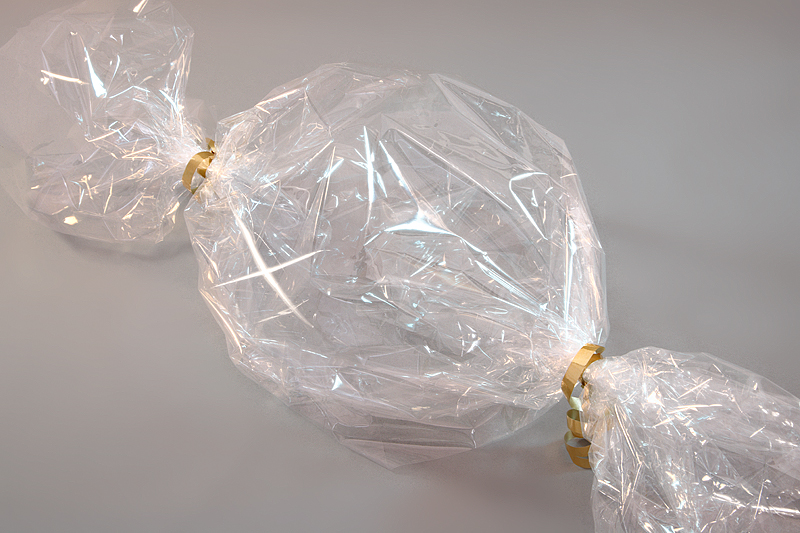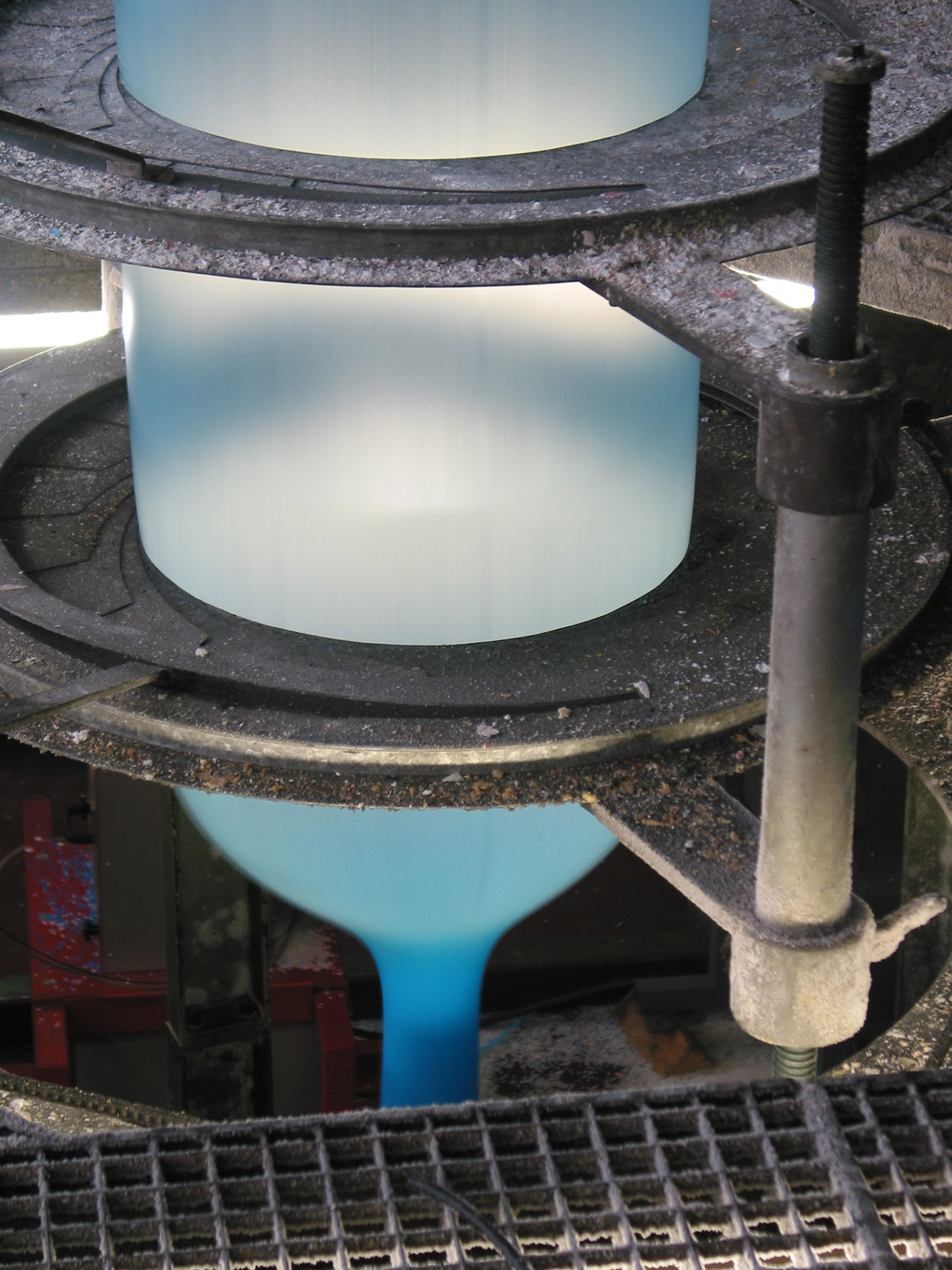Plastic Film on:
[Wikipedia]
[Google]
[Amazon]


 Plastic film is a thin continuous polymeric material. Thicker plastic material is often called a "sheet". These thin
Plastic film is a thin continuous polymeric material. Thicker plastic material is often called a "sheet". These thin
 Plastic films are usually
Plastic films are usually

 Plastic film is a thin continuous polymeric material. Thicker plastic material is often called a "sheet". These thin
Plastic film is a thin continuous polymeric material. Thicker plastic material is often called a "sheet". These thin plastic
Plastics are a wide range of synthetic or semi-synthetic materials that use polymers as a main ingredient. Their plasticity makes it possible for plastics to be moulded, extruded or pressed into solid objects of various shapes. This adapta ...
membranes are used to separate areas or volumes, to hold items, to act as barriers, or as printable surfaces.
Plastic films are used in a wide variety of applications. These include: packaging, plastic bag
A plastic bag, poly bag, or pouch is a type of container made of thin, flexible, plastic film, nonwoven fabric, or plastic textile. Plastic bags are used for containing and transporting goods such as foods, produce, powders, ice, magazine ...
s, labels, building construction, landscaping, electrical fabrication, photographic film
Photographic film is a strip or sheet of transparent film base coated on one side with a gelatin emulsion containing microscopically small light-sensitive silver halide crystals. The sizes and other characteristics of the crystals determine ...
, film stock
Film stock is an analog medium that is used for recording motion pictures or animation. It is recorded on by a movie camera, developed,
edited, and projected onto a screen using a movie projector. It is a strip or sheet of transparent ...
for movies, video tape, etc.
Materials
Almost all plastics can be formed into a thin film. Some of the primary ones are: *Polyethylene
Polyethylene or polythene (abbreviated PE; IUPAC name polyethene or poly(methylene)) is the most commonly produced plastic. It is a polymer, primarily used for packaging ( plastic bags, plastic films, geomembranes and containers including b ...
– The most common plastic film is made of one of the varieties of polyethylene: low-density polyethylene, medium-density polyethylene, high-density polyethylene
High-density polyethylene (HDPE) or polyethylene high-density (PEHD) is a thermoplastic polymer produced from the monomer ethylene. It is sometimes called "alkathene" or "polythene" when used for HDPE pipes. With a high strength-to-density rat ...
, or linear low-density polyethylene
Linear low-density polyethylene (LLDPE) is a substantially linear polymer ( polyethylene), with significant numbers of short branches, commonly made by copolymerization of ethylene with longer-chain olefins. Linear low-density polyethylene differ ...
.
* Polypropylene
Polypropylene (PP), also known as polypropene, is a thermoplastic polymer used in a wide variety of applications. It is produced via chain-growth polymerization from the monomer propylene.
Polypropylene
belongs to the group of polyolefins a ...
– Polypropylene can be made a cast film, biaxially oriented film (BOPP), or as a uniaxially oriented film.
* Polyester
Polyester is a category of polymers that contain the ester functional group in every repeat unit of their main chain. As a specific material, it most commonly refers to a type called polyethylene terephthalate (PET). Polyesters include natura ...
– BoPET is a biaxially oriented polyester film.
* Nylon
Nylon is a generic designation for a family of synthetic polymers composed of polyamides ( repeating units linked by amide links).The polyamides may be aliphatic or semi-aromatic.
Nylon is a silk-like thermoplastic, generally made from pet ...
– BOPA/BON is a Biaxially Oriented Polyamide/Nylon - (Commonly known as Nylon)
* Polyvinyl chloride – film can be with or without a Plasticizer
* Cellulose acetate - an early bioplastic.
* Cellophane - made of regenerated cellulose.
* A variety of bioplastics and biodegradable plastic
Biodegradable plastics are plastics that can be decomposed by the action of living organisms, usually microbes, into water, carbon dioxide, and biomass. Biodegradable plastics are commonly produced with renewable raw materials, micro-organisms ...
s are available.
* Semiembossed film {{unreferenced, date=July 2013
Semiembossed film is used as a liner to the calendared rubber to retain the properties of rubber and also to prevent dust and other foreign matters from sticking to the rubber while calendaring and during storage. It ...
– Semiembossed film can be used as a liner to the calendered rubber to retain the properties of rubber and also to prevent dust and other foreign matters from sticking to the rubber while calendering and during storage
Processes
 Plastic films are usually
Plastic films are usually thermoplastic
A thermoplastic, or thermosoft plastic, is any plastic polymer material that becomes pliable or moldable at a certain elevated temperature and solidifies upon cooling.
Most thermoplastics have a high molecular weight. The polymer chains associate ...
s and are formed by melting for forming the film.
* Cast – Plastics extrusion can cast film which is cooled or quenched then wound up on a roll.
* Extruded film can be stretched, thinned, or oriented in one or two directions. Blown or tubular process forces air into an extruded ring to expand the film. Flat tenter frames stretch the extruded film before annealing.
* Calender rolls can be used to form film from hot polymers
* Solution deposition is another film forming process.
* Skiving is used to scrape off a film from a solid core (sometimes used to make PTFE thread seal tape)
* Coextrusion involves extruding two or more layers of dissimilar polymers into a single film
* Lamination combines two or more films (or other materials) into a sandwich.
* Extrusion coating is used to form a film onto another film or substrate
Further processing
Plastic films are typically formed into rolls byroll slitting
Roll slitting is a shearing operation that cuts a large roll of material into narrower rolls. There are two types of slitting: log slitting and rewind slitting. In log slitting the roll of material is treated as a whole (the 'log') and one or m ...
. Often additional coating
A coating is a covering that is applied to the surface of an object, usually referred to as the substrate. The purpose of applying the coating may be decorative, functional, or both. Coatings may be applied as liquids, gases or solids e.g. Pow ...
or printing
Printing is a process for mass reproducing text and images using a master form or template. The earliest non-paper products involving printing include cylinder seals and objects such as the Cyrus Cylinder and the Cylinders of Nabonidus. The ...
operations are also used. Films can be modified by physical vapor deposition to make metallised films. Films can be subjected to corona treatment or plasma processing; films can have release agents applied as needed.
See also
*Converters (industry)
Converting companies are companies that specialize in modifying or combining raw materials such as polyesters, adhesives, silicone, adhesive tapes, foams, plastics, felts, rubbers, liners and metals, as well as other materials, to create new pro ...
*Die cutting (web)
Die cutting is the general process of using a die to shear webs of low-strength materials, such as rubber, fibre, foil, cloth, paper, corrugated fibreboard, chipboard, paperboard, plastics, pressure-sensitive adhesive tapes, foam, and s ...
* Film base
*Film blowing machine
A film blowing machine involves one process used to make plastic film. Extruded tubular processing is most often used with polyethylene films but can be used with other polymers.
The film may be laminating film, shrink film, agricultural covering ...
*Heat sealer
A heat sealer is a machine used to seal products, packaging, and other thermoplastic materials using heat. This can be with uniform thermoplastic monolayers or with materials having several layers, at least one being thermoplastic. Heat sealing ...
* Journal of Plastic Film and Sheeting
* Overwrap
*Plastic welding
Plastic welding is welding for semi-finished plastic materials, and is described in ISO 472 as a process of uniting softened surfaces of materials, generally with the aid of heat (except solvent welding). Welding of thermoplastics is accomplish ...
*Plastic wrap
Plastic wrap, cling film, Saran wrap, cling wrap, Glad wrap or food wrap is a thin plastic film typically used for sealing food items in containers to keep them fresh over a longer period of time. Plastic wrap, typically sold on rolls in boxes ...
* Shrink wrap
* Stretch wrap
*Thin film
A thin film is a layer of material ranging from fractions of a nanometer ( monolayer) to several micrometers in thickness. The controlled synthesis of materials as thin films (a process referred to as deposition) is a fundamental step in many ...
References
Standards by ASTM International
: D882 – Standard Test Method for Tensile Properties of Thin Plastic Sheeting :D1004 – Standard Test Method for Tear Resistance (Graves Tear) of Plastic Film and Sheeting :D1204 – Standard Test Method for Linear Dimensional Changes of Nonrigid Thermoplastic Sheeting or Film at Elevated Temperature :D1593 – Standard Specification for Nonrigid Vinyl Chloride Plastic Film and Sheeting :D1709 – Standard Test Methods for Impact Resistance of Plastic Film by the Free Falling Dart Method :D1894 – Standard Test Method for Static and Kinetic Coefficients of Friction of Plastic Film and Sheeting :D1922 – Standard Test Method for Propagation Tear Resistance of Plastic Film and Thin Sheeting by Pendulum Method :D1938 – Standard Test Method for Tear Propagation Resistance of Plastic Film and Thin Sheeting by a Single Tear Method :D2103 – Standard Specification for Polyethylene Film and Sheeting :D2582 – Standard Test Method for Puncture Propagation Tear Resistance of Plastic Film and Thin Sheeting :D2673 – Standard Specification for Oriented Polypropylene Film :D2732 – Standard Test Method for Unrestrained Linear Thermal Shrinkage of Plastic Film and Sheeting :D2838 -Standard Test Method for Shrink Tension and Orientation Release Stress of Plastic Film and Thin Sheeting :D2923 – Standard Test Method for Rigidity of Polyolefin Film and Sheeting :D3420 – Standard Test Method for Pendulum Impact Resistance of Plastic Film :D3595 – Standard Specification for Polychlorotrifluoroethylene (PCTFE) Extruded Plastic Sheet and Film :D3664 – Standard Specification for Biaxially Oriented Polymeric Resin Film for Capacitors in Electrical Equipment :D3985 – Standard Test Method for Oxygen Gas Transmission Rate Through Plastic Film and Sheeting Using a Coulometric Sensor :D4321 – Standard Test Method for Package Yield of Plastic Film :D5047 – Standard Specification for Polyethylene Terephthalate Film and Sheeting :D6287 – Standard Practice for Cutting Film and Sheeting Test Specimens :D6988 – Standard Guide for Determination of Thickness of Plastic Film Test Specimens :D8136 - Standard Test Method for Determining Plastic Film Thickness and Thickness Variability Using a Non-Contact Capacitance Thickness Gauge :E1870 – Standard Test Method for Odor and Taste Transfer from Polymeric Packaging Film :F2029- Standard Practices for Making Heatseals for Determination of Heatsealability of Flexible Webs as Measured by Seal Strength :F2622 – Standard Test Method for Oxygen Gas Transmission Rate Through Plastic Film and Sheeting Using Various SensorsBooks and general references
* Hawkins, William E, The Plastic Film and Foil Web Handling Guide CRC Press 2003 *Jenkins, W. A., and Osborn, K. R. Plastic Films: Technology and Packaging Applications, CRC Press 1992 * Yam, K. L., "Encyclopedia of Packaging Technology", John Wiley & Sons, 2009, {{plastics Packaging materials Plastics applications